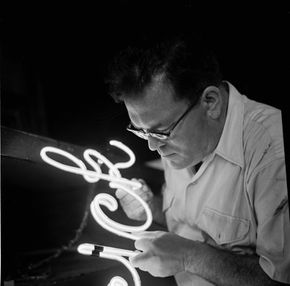If you were to look outside your home during a thunderstorm and see a tall streetlamp glowing with blue flames, you might be tempted to call the fire department. Then you might notice that the streetlamp is on fire but isn't actually burning -- and the water from the fire hose isn't putting out the flames. At this point, you might be about ready to call a priest, but that, like the call to the fire department, would be unnecessary. The phenomenon you're witnessing is actually St. Elmo's Fire. (Which has nothing to do with a 1980s coming-of-age film starring a young Emilio Estevez.)
St. Elmo's Fire is a weather phenomenon involving a gap in electrical charge. It's like lightning, but not quite. And while it has been mistaken for ball lightning, it's not that, either -- and it's definitely not fire.
Advertisement
Early observers of the phenomenon, mostly sailors on high seas during thunderstorms, seem to have understood they weren't looking at actual fire, because instead of abandoning ship, they took comfort in the sudden glow atop the masts. Such famous figures as Magellan, Caesar and Columbus experienced St. Elmo's Fire on their journeys. And Pliny the Elder, who seems to have documented absolutely every natural phenomenon back in the 1st century A.D., beat everyone else to the punch when he described blue flames appearing out of nowhere during thunderstorms.
Sailors tended to attribute the glow to "St. Elmo," a mispronunciation of St. Ermo or St. Erasmus, the patron saint of Mediterranean sailors. They believed the fire was a sign of salvation from the saint, since the phenomenon occurs most often toward the end of a storm. Benjamin Franklin and Charles Darwin viewed the weather event through a decidedly more scientific perspective. But regardless of interpretation, it's clear they were all observing the same phenomenon. And contrary to popular belief, St. Elmo's Fire doesn't only occur at sea.
As with all electrical phenomena, St. Elmo's Fire is about electrons. So, what is St. Elmo's Fire if it's not a form of lightning? Find out in the next section.
Advertisement

